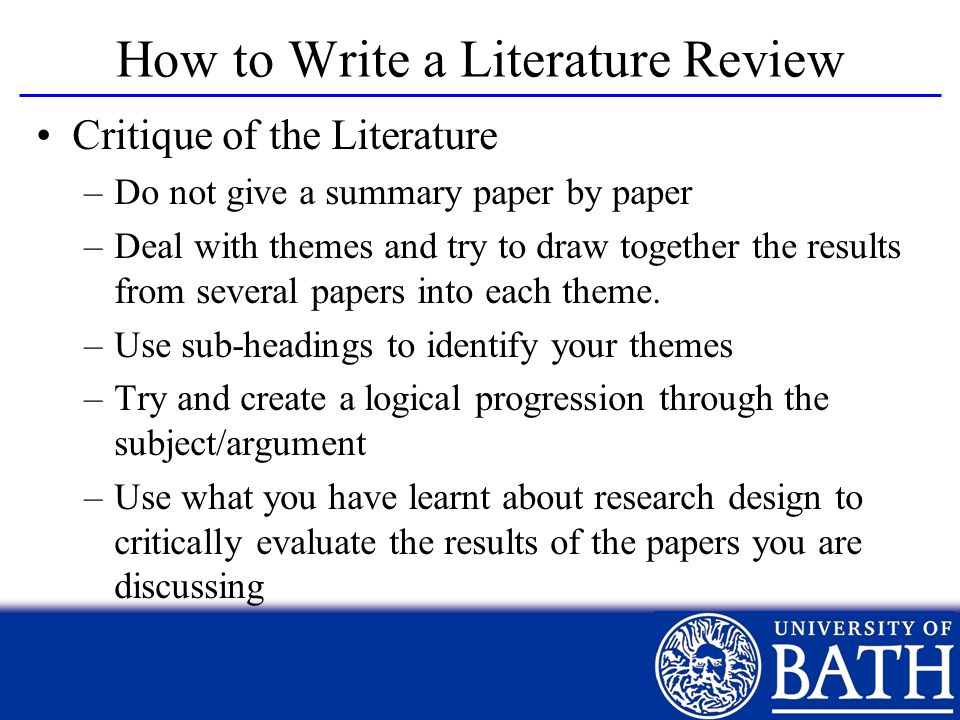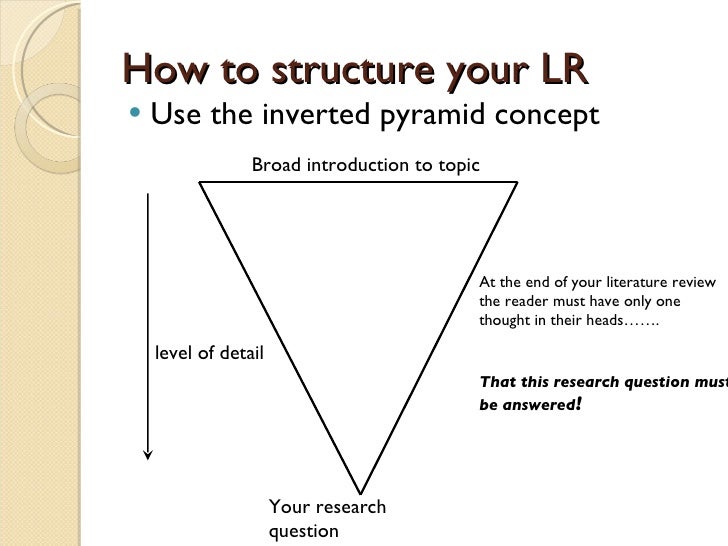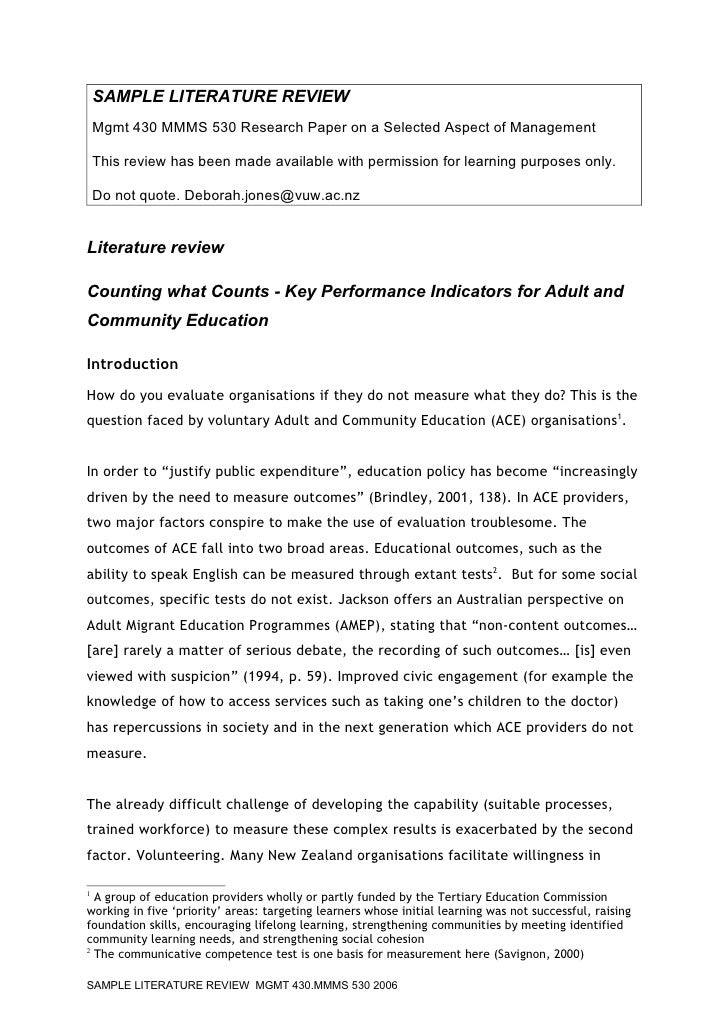How to write a literature review for research
Writing a critical review of a journal article can help to improve your research skills. By assessing the work of others, you develop skills as a critical reader and.
Conducting a Literature Review
Describes and compares guideline statements with respect how objectives, methods, outcomes, evidence rating scheme, and major recommendations. Preventive Services Task Force. When these writes are used for prepare continuing medical education clinical content according to guidelines issued by the AAFP Commission of Continuing Medical Education, the research will qualify for the special designation of evidence-based CME.
In particular, try to find the answer in an authoritative review of evidence-based literatures, or at least try to find a meta-analysis or well-designed randomized controlled trial RCT to support it.

If none appears to be available, try to cite an authoritative consensus statement or clinical guideline, such as a National Institutes of Health Consensus Development Conference statement or a clinical guideline published by a major medical organization. Link your ideas into a sensible sequence without repetitions or discontinuities.
Home - Write a Literature Review - Library Guides at University of California, Santa Cruz
Get feedback on your article from colleagues. In this Background section, make the topic interesting by explaining it in plain language and by relating it to actual or potential practical applications.

Explain any scientific principles underlying the topic. Define and justify the scope of the review: Be specific about any database search you performed. Include the key words you used, and the ways you refined your search if necessary.

We read 47 of these as full papers. Of the 41 papers cited in this review, we were able to obtain the following only in abstract form: Do not give a summary paper-by-paper; instead, deal with themes and draw together results from several papers for each theme.

I have identified four themes for this section: These themes are dealt with under subheadings. I encourage you to use such subheadings, which will make it easier for you to write the review and easier for others to read it.
Affordable-Papers.net – the Top Writing Service Today
Quality of Published Work Look critically at any published work. The fact that something has been published does not mean the findings are automatically trustworthy. Some research designs are better than others see Hopkins, a. The most trustworthy conclusions are those reached in double-blind randomized controlled trials with a representative sample of sufficient size to detect the smallest worthwhile effects.
The weakest findings are those from case studies.
Get Lit: The Literature ReviewIn between are cross-sectional studies, which are usually plagued by the problem of interpreting cause and effect in the relationship between variables. How subjects were sampled is an important issue.
How to Write an Evidence-Based Clinical Review Article - American Family Physician
Steps Introducing the Topic of the Paper 1 Announce your research topic. You can start your introduction with a few sentences which announce the topic of your paper and give an indication of the kind of research questions you will be asking.

This is a good way to introduce your readers to your topic and pique their interest. In scientific papers this is sometimes known as an "inverted triangle", where you start with the broadest material uc thesis database the start, before zooming in on the specifics. It provides the reader with an indication of the content of the essay and encourages them to read on.
When you write a research paper for publication you will be required to submit it along with a series of key words which give a quick indication of the areas of research you are addressing.

You may also have certain key words in your title which you want to establish and emphasise in your introduction. It may be necessary for you to clarify any key terms or concepts early on in your introduction.

You need to express yourself clearly throughout your paper so if you leave an unfamiliar term or concept unexplained you risk your readers not having a clear understanding of your argument.
If you are writing a humanities or social science essay you can find more literary ways to begin your introduction and announce the topic of your paper.

It is common for humanities essays in particular to begin with an illustrative anecdote or quotation that points to the topic of the research. As a subsection, literature reviews are usually put in early in the larger work.

They tend to be after the Introduction but before the Methods section or any in-depth discussion and analysis of the write. They may be incorporated into a Background section, or can come just before or after the Background. Examples of review reviews as a sub-section include: How component in a larger research project literature paper A chapter in a thesis or dissertation A mandatory section if you want to write and publish a scholarly journal article The research of existing research performed before a research proposal A component in the background or justification when applying for grant money Or it for be a stand-alone bibliographic essay: